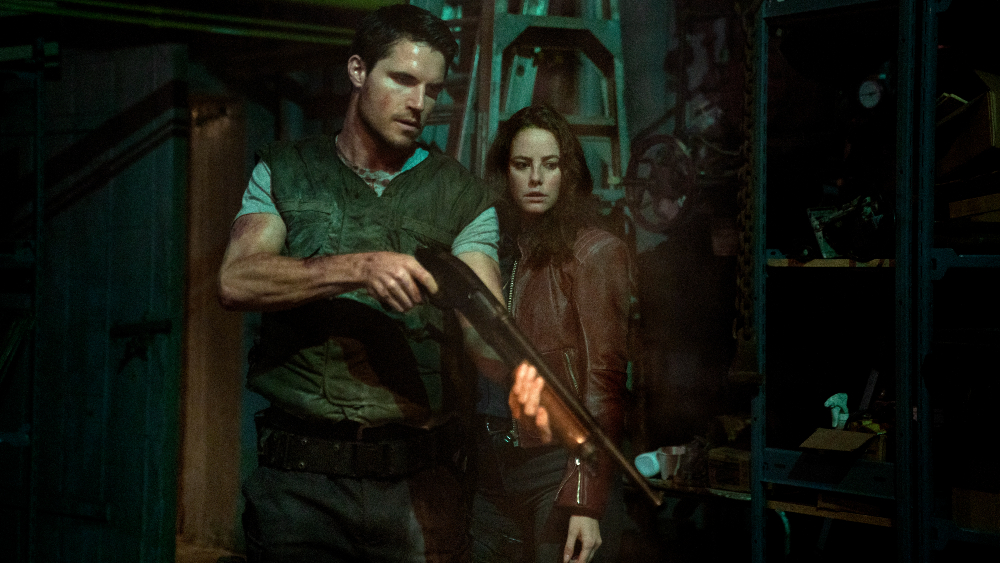
After directing the shark movies, 47 Meters Down and its sequel, 47 Meters Down: Uncaged, filmmaker Johannes Roberts had to figure out what to do next. Although Sony Pictures and Screen Gems had already made six Resident Evil movies with Paul WS Anderson, Roberts came upon a way of rebooting the franchise with the prequel, Resident Evil: Welcome to Raccoon City.
While there’s certainly the cynics out there who love the Capcom video game franchise and who may or may not have liked what Anderson did with his franchise, there’s no denying that those films were a huge success. That’s partially why it made sense to keep things going, and Roberts has created a prequel film that’s more faithful to at least the first two Resident Evil video games but also is considerably more grounded.
Roberts’ movie goes back to the beginning, 1998, before things went awry at the Umbrella Corporation, where its experiments with various genomes and viruses could only possibly lead to the outbreak of infection, for which the video games have become well-known. In this movie, Kaya Scodelario (The Maze Runner) plays popular character Claire Redfield while Robbie Amell (Arrow) plays her brother, Chris. They’re two of the people who become trapped in Raccoon City when all hell breaks out.
The cast also includes Hannah John-Kamen (Ant-Man and the Wasp) as the equally popular character, Jill Valentine; Neal McDonough as Umbrella Corporation’s lead scientist, Dr. Birkin; Donal Logue as Raccoon City Police Chief Brian Irons; Avan Jogia as Leon S. Kennedy; and others.
Below the Line got on Zoom with Roberts a few weeks back to talk about what was involved with reinventing the zombie-infused video game in the middle of an actual pandemic.
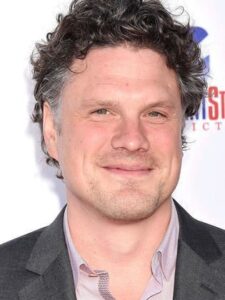
Below the Line: I didn’t really know much about you when you did 47 Meters Down and then the sequel. I didn’t even know you were British, and I hadn’t seen some of the other movies you had done. Had any of the other movies you made before then been released in the States that you know of?
Johannes Roberts: So I started like 20 years ago, and I did this movie called Sanitarium with Yuri Geller in it, and I made it on like 5,000 pounds. It’s all shot on film, and I had no idea what I was f*cking doing, but we sold it around the world on DVD. So it came out in America, and then I did sort of a run of like B-movie DVD things, just learning my trade. I was only 20, 21, 22, and they all sort of came out in America on DVD. And then, the first theatrical thing I have in America is I did a movie that I really liked called F, that got released theatrically in the UK, and that was my big break, and it was the first time I had a movie in cinema. Nobody went to see it, but it got good reviews, and it was a big step for me, and suddenly, people took me seriously in America. It just came out on DVD called The Expelled, but it’s a cool movie. I did a movie called Storage 24, which I believe holds the lowest gross of all time in America, because Magnolia put it out for one day, and I think the reported gross was like $72, so that was my first foray into American movies. And then, Other Side of the Door I did after that, was out on a large limited, so like 500 screens, and then I did 47, which became crazy.
BTL: How did you go from doing the two shark movies to reinventing Resident Evil? I actually like the games a lot, and I enjoyed Paul Anderson’s movies as a guilty pleasure. Did Screen Gems come to you and ask for you to pitch something?
Roberts: I sort of came into it in a slightly weird way in my love of it. When I was growing up, I never played the games — I was not a gamer — but I was obsessed with [watching] people play. It was really amazing to me, because I’ve always been a horror nut, and horror was in a really bad place when the first game came out. In England, it was really hard. I was living in a city called Southampton, and a horror movie I could see in the cinema was probably Anaconda. That was what horror was, and it was a really bad time. Wes Craven sort of brought things back with Scream, but that really wasn’t my bag either. To try and get to see [John Carpenter’s] In the Mouth of Madness, you had to find a cinema, and Village of the Damned didn’t even come out in cinema, so it was in a bad place.
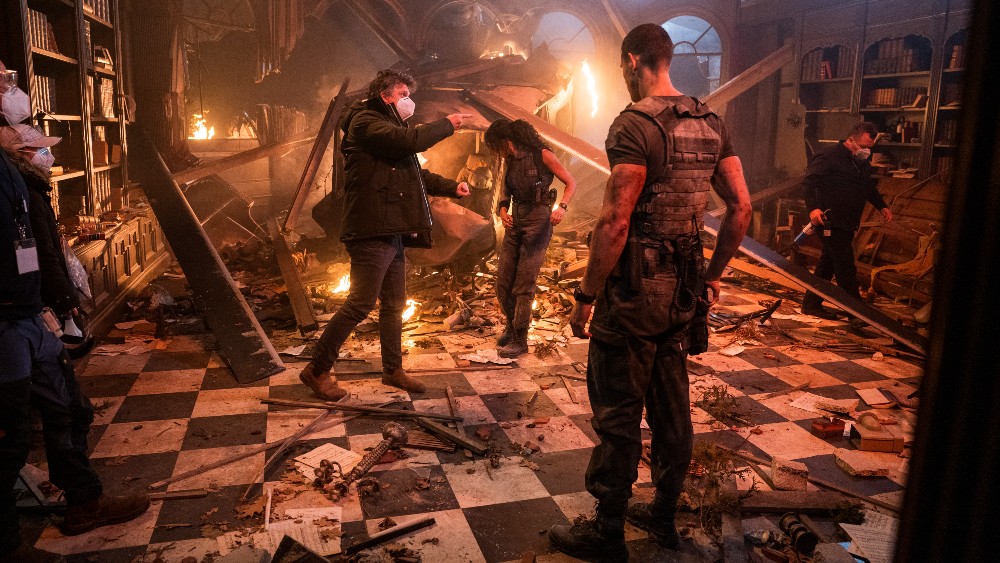
And then, suddenly, this game came out where it was sort of referencing all the things that I loved, and I always felt really uncool for loving, because it just wasn’t, at the time, in vogue. And yet, when it was in game format, suddenly people really embraced it. I was like, “I know all these movies that this is in love with, itself,” so it became a thing that sort of became loved. I then came into it in a different way when Paul did his first Resident Evil movie, which I absolutely adored, and just completely fell in love with Milla Jovovich. So the franchise has always sort of been in my blood, and I had gotten to know Jeremy Bolt quite a bit, who’s the producer of the last franchise. It’s very rare for a British producer to be so commercially-minded and make it out in LA, and I really respected that. We got to know each other, so I was always around that world.
After part six, the Constantin [Film] guys had been looking at how to reboot it. They looked at TV, they’d looked at doing an adaptation of Part Seven, the seventh game. They had done a TV script that was very Milla-lite, like in that world, and then they’d done another script that was very much based around the Part 7 game, sort of Texas Chainsaw Massacre thing. They didn’t really like either, and they were sort of caught in this kind of, “What are we going to do?” kind of scenario. I think, basically, it was a case of Robert Kulzer at Constantin, going, “Yeah, this guy. I like this guy.” I came in and met them, and we just hit it off. He’s German, I’m half-German, we had the same sense of humor, whatever German humor is. We just kind of clicked, and we would just chew the fat, and we liked the same movies. We really liked sort of 70s conspiracy thrillers, and I remember a really big turning point in our relationship was when Chernobyl came out, the TV show, and it was just like, “Holy f*ck, what is this amazing show?” We were always talking those same kinds of references in stuff that we loved.
I kind of signed on. They were like, “Look, we want to do this,” but they didn’t really know what they wanted to do. It sort of kicked around and to do your deal always takes a long time, so it sort of kicked around and around. And then suddenly, I don’t know where it came from, but Capcom were just about to release the remake of the second game. I don’t think anybody really knew what that was going to be. I don’t think people thought it was going to be what it became.
I had started to get into gaming myself then. I’d been starting to really be obsessed with The Last of Us and Last of Us Part II later, I became totally obsessed with. It was just like, “Why don’t we go back back to what the fans have always been asking for, which is the iconic mansion, the police station, and let’s look at those first two games, and let’s tell a story going back there.” It was really interesting. There was some resistance. At the time, I don’t think anybody knew if it was the right thing to do, but it was so the right thing to do. It was like, “F*ck, yeah! Of course!” and we just went ahead and just made this thing that’s kind of a love letter to those first two games.
To be honest, I think the thing that really helped me (and all of us) is when the second game came out, it just was phenomenal. I was a full-on gamer by this point, and I just was like, “Holy shit. This is the tone of the movie. This is the look of the movie. I love the setpieces. This is cinematic,” and it was like, “Look, this is what we want to do,” and then the fact that the game became hugely successful.
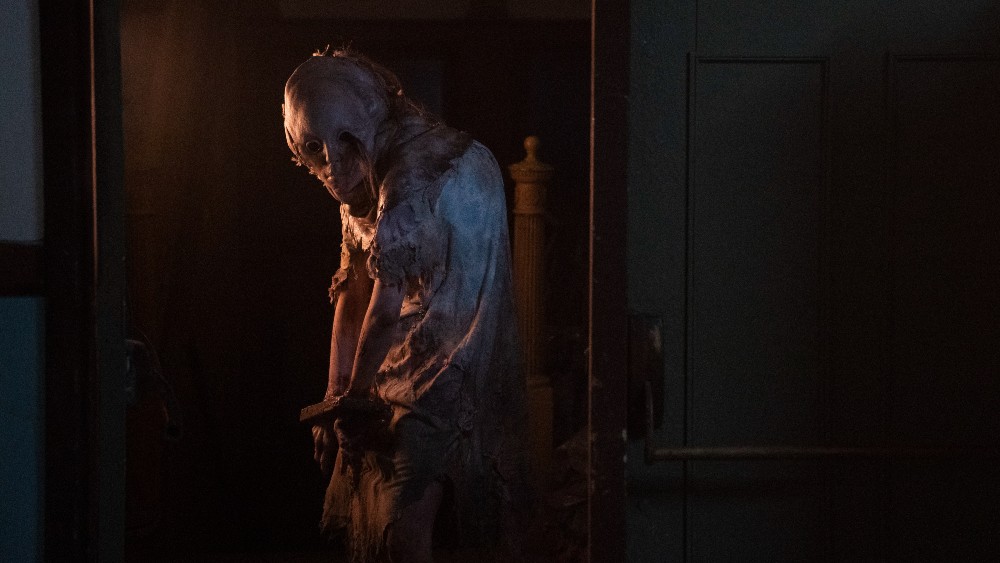
BTL: I mainly know those first two games. I haven’t followed the game franchise as much as the movie. I love those familiar settings and those frustrating creatures that would show up. Were there any creatures or things you wanted to make sure to include in this one, like the Lickers, obviously?
Roberts: You couldn’t go back to doing a Resident Evil movie without having the Licker in it, and there were certain touchstones, like the crow and the dog, but for me, the big one that I wanted to do, that I thought was key to the way I was going to tell this movie and how it was a completely different separate entity to the Paul Anderson movies was Lisa Trevor. I remember handing in my first draft and Robert being genuinely surprised how much of a role Lisa Trevor was, but in a good way. I was just like, “Look, we’re making a horror movie. We’re making this 70s creepy ass horror conspiracy movie.” The Lisa Trevor thing always had struck me from the very first time as something slightly it was one of the most disturbing things, the myths and mythologies around her. It was just a weird character, and I was like, “Yeah, I wanna put this in this movie.” It’s not just a monster monster, it’s a sort of haunted three-dimensional weird creature. I just felt that it really helped set the tone for the film we’re going to tell. That was my big thing, and it had never been done before. She’d never been in previous movies, so it was kind of cool to do that.
BTL: Since this is for Below the Line, I’d like to talk about the team you put together for the film, including the cinematographer, production designer. It’s an amazing-looking movie, and I was surprised that you worked with a new team on this one. You didn’t bring over people from previous movies.
Roberts: A lot of it is just who’s where they are at the time. Maxime [Alexandre], who was the DP, I’d shot Other Side of the Door with, so I had a shorthand with him. He came on, and that was great. The last two big movies I’d done were underwater movies, and that’s a whole different team. It doesn’t transfer necessarily, although I loved that production designer. We were shooting in Canada, so you have to use quite a lot of Canadian crew. We had Maxime, who beautifully shot the movie, and it was a tricky movie to shoot, very. Jennifer Spence and Tony Ianni, who were the production designer and art director of the movie. It was an interesting one, for both of them. It was a really interesting experience in that you’re a production designer, but you’re also following the game really closely. You’re kind of having to lean into that, and it was a very weird one, I think at times of like, “Hey, what about if we do this?” And it’s like, “Yeah, but that’s not really what the game is. I get it. It’s kind of cool, but… ” It was a very odd kind of thing, but I think apart from Maxim, it was a whole new team for me.
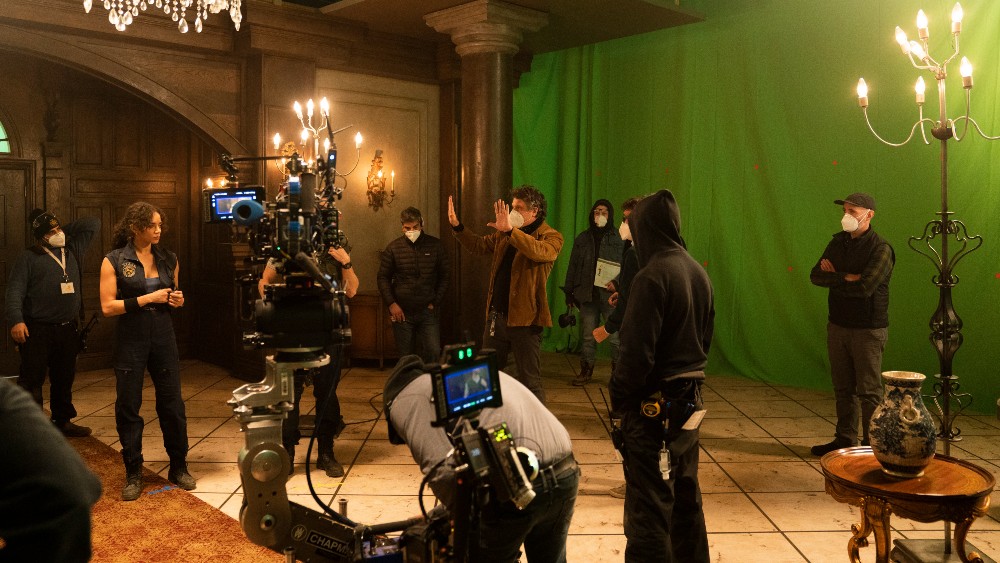
BTL: I’ve noticed since I’ve been at Below the Line that the production design in horror movies tends to be particularly great, and Jennifer has done so many classics from James Wan and Jason Blum.
Roberts: She had just done a movie for a very good friend of mine called Songbird, which was this Michael Bay pandemic movie. I was just chatting to my friend, and we were looking at production designers, and he said, I love this woman so much, and it also turned out she was Canadian, which helps with the tax situation. He was like, “I absolutely love this woman. You have to use her.” So, I really just went off his word on that, and then she was in between James Wan movies. She had just done Conjuring Three, I think, so there was a slot there, and she had just worked with Maxime on Shazam! so they knew each other, which was good, and there was a shorthand there.
I’ve never done a movie like this before. Canada is super strict with the whole quarantine and the whole pandemic thing. I was choosing locations and we were starting builds before Jen had even got free of quarantine and been on set. It’s really weird. There were times we were walking on set for our tech reccie, or even shooting, , and he’d never seen the stuff — he’d never been there. So it was really tough, and I have to say, it was a ballsy call from Constantin in that, we’re there, the movie’s greenlit, but it’s like, “Do you want to do this now? Because we’re in the height of pandemic.” If this goes down, nobody’s coming along, going, “Don’t worry, you’re insured for all of this.” There’s none of that for the pandemic, and there’s no extra days or extra money given to you for it. They just went, “You know what? We have to make movies and who knows what it’s going to be like next year?” So they just made that call, and it was ballsy. I think the fact that I’d come up doing super low-budget B movies, and then having got into the whole underwater world. I was just kind of bulletproof to the crazy around me, so that kind of helped. That was not an easy movie — minus 10 Toronto nights. Yeah, it was pretty bleak.
BTL: You touched upon something I was going to ask anyway. At what point were you at when the March shutdown happened. Were you already in preproduction or were you shooting already?
Roberts: When March happened, we weren’t even greenlit I don’t think. I arrived in Toronto, or in Sudbury where we shot this, in August. We shot right through and edited right through the non-vaccine part of pandemic, so there was some risky calls that had to be made, in terms of people’s money. We had to be tested constantly, and if anybody had just the slightest worry, we’d have shut down. There’s no messing around, and that’s it.
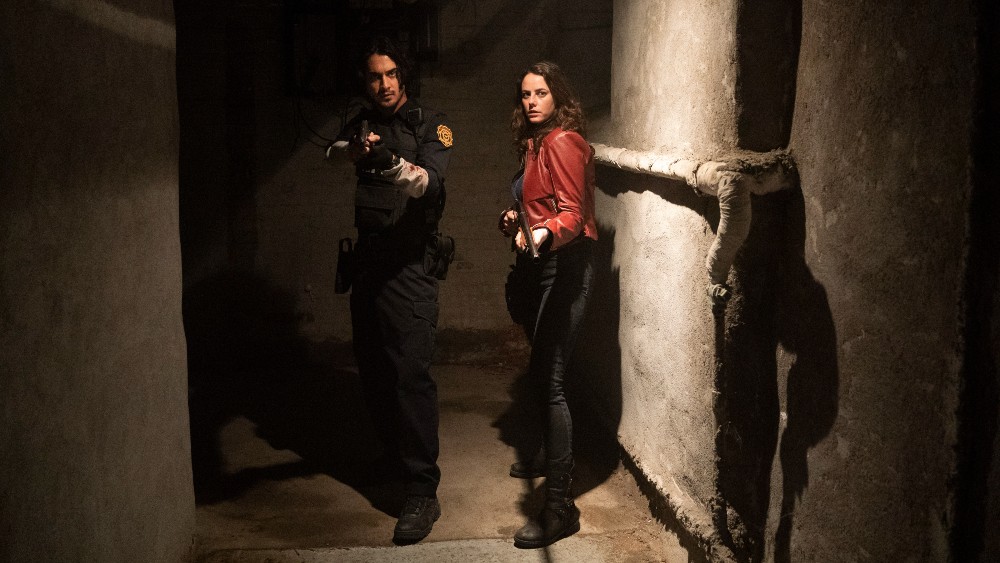
BTL: I want to ask about your editor Dev Singh, because I remember Spiral Cinematographer Jordan Oram talking about working with him on that movie.
Roberts: Yeah, he’s gonna be big for sure. It was just him, and I for eight, nine months — or it was a year actually, because he was on through shooting. What I do is I constantly do video messages, because I’m very used to doing it with my son, who doesn’t live with me. Very early, before the whole pandemic thing, I got very used to doing video messages. so now, when I’m on set and in prep, I’m always like video messaging. [Dev] would get these calls constantly, and he’d never had that before. I think I’m reasonably laid back, but you get very insecure, and he needs to be the one telling me, “No, look, this isn’t shit. This is good. This is working.” Whatever.
For a year, he had to put up with me, and that in itself says something, because I’m not the easiest person to deal with for a year. I just remember actually shooting the Itchy Tasty sequence, which we shot very much at the beginning, or it was the first couple of days, and he was a new editor to me. For the last five, six movies, I’ve used the same editor. We’ve got a very shorthand relationship, and because of logistics and tax stuff, he wasn’t able to be on it. This was the first time with Dev, so there was a lot of, “Who is this guy? Who is this interloper into my world?” I remember shooting the Itchy Tasty sequence, and he sent me back a cut, and he cut it in a way, I never would have cut it. I was like, “Oh, that’s weird what you’ve done there. I hadn’t shot it to be like that,” but I was like, “Oh, that’s smart. That really works.” From there on in, it was like, “Okay, this guy knows what he’s doing. This guy knows horror.” Then I was like, “Okay, fine, I trust you now,” and we just sort of moved on from there. It was a good experience. He’s a very smart, very cine-literate editor. We had a lot of politics on the movie. You have Capcom, you have Sony, you have Screen Gems, you have Constantin, you have the fans, you have my Mom, you have everybody.
BTL: Your Mom’s a big Resident Evil fan, is she?
Roberts: [laughs] So there’s a lot of voices that you have to listen to and understand, and then you gotta put your own voice in there, and he has to listen to my voice, but also put his voice in, so it was a long tricky, experience, and the movie couldn’t have survived a bad post, because we were so on the edge actually shooting the movie, because of the whole pandemic. We were just keeping it on there. It couldn’t have survived the post being rickety. Between Dev and Andre [Coutu], who’s the post supervisor, we formed a unit, because we were essential workers, basically. We were in this huge building just on our own, and we just formed a unit for a year and just created this movie. But we had good fun. It was tough, but I look back on that with much fondness and really made the movie into what it is. I’m not sure what he’s doing now, but the one thing I brought to his life was the saying we had in the edit room. I’m a huge Jim Steinman fan, you know, the composer who wrote Bonnie Tyler‘s songs. Our saying for the edit room was the same from Jim Steinman which is, “If you don’t go over the top, how are you going to know what’s on the other side? ” That would be our mantra for the movie. It’s like, “Come on, let’s have fun! Go crazy! Never hold back!” that kind of stuff.
BTL: Before we wrap things up, I do want to talk about the creatures, because you have the games for reference, and the infected you have from thousands of zombie movies and TV shows, so how much are you trying to create on set practically for the creatures, which obviously end up being done with visual effects?
Roberts: The zombie stuff was by far the hardest thing. It was weird. Everybody’s very nervous talking about zombies, because it sounds like such a B-term when you’re talking… When we were creating the movie, it was the one thing that had not really been spoken about that much, oddly, for a zombie movie. We’d been speaking in terms like infected and very elevated terms. The first zombie sequence was at the gates of the police station, minus 10, all the extras come on, and it’s a pandemic, so it was hard to deal with, and it was suddenly like, “Holy shit, what are we doing here?” It was suddenly like a realization that, “Oh f*ck, this is a zombie movie.” There’s a group of zombies, and there’s some [George] Romero ones and some fast ones. I remember coming home to my wife and just being like, “Holy shit. I think I f*cked that up.” I then went and made sure that I went back and reshot all the bits that we did that day, because I suddenly just blew my mind, and you suddenly feel the weight of all this cinematic history on you, of all the zombie movies of the Romero, the Danny Boyle — I know Danny Boyle doesn’t like to call it a zombie movie — Zack Snyder, but it’s all there. That was a really mind-blowing sort of moment. I actually went back and throughout the movie, then reshot all the zombie stuff from that day, which was great. We were obviously very faithful to the game, but also, I was so obsessed with Chernobyl. I found that show and the makeup really disturbing when people got sick. That was definitely a real influence when Steve Newburn, who was doing the design of the zombies, and I were working on it, that was definitely this translucent skin rotting, falling off, kind of hair falling out kind of vibe. So that was a big thing. And then, there were a couple of big moments. There’s Lisa Trevor, there’s the Licker, and then there’s SPOILER.
There were always discussions about, “Look, we can just make this full CG.” And I just didn’t want to do that. With Lisa Trevor, my first instinct was to use Javier Botet, who did Other Side of the Door with me and Mama and stuff. He’s super cool, but it was very tricky with the pandemic. He does the creep very well, but I wanted real movement and fight and stuff like that. Sony had just been doing a movie called The Unholy where they used this girl, who was in the James Wan movie, Malignant, and they showed me stuff with her, and I was like, “Yeah, her, Marina [Mazepa].” So she came over and she was great, and she just made that character her own. That was such a big thing. It wasn’t just someone in a suit, and it wasn’t CG. It was someone that really thought about the vocalizations and the movements and everything, and it was like a proper, well thought-out experience. And then, also, because she’s a movement specialist, we got her to be the Licker. The bigger creatures, again, as much I can, I anchor with human performances and reality until it gets to a stage that you can’t do anymore. As much as I could, I wanted to keep this quite — not grounded, it’s not a grounded movie — but to feel low-tech. I wanted it to feel retro. It has this sort of super-retro feel, and just wanted that to be across the whole movie and just feel like everything was kind of physical there.
BTL: Compared to Paul’s movie, this was pretty grounded. Anyway, it’s great talking to you, and it’s just amazing to see how people continue to make these amazing movies during a pandemic. I’m not sure someone would see this movie in ten years and have any idea it was made during a pandemic.
Roberts: It was a good team. There was love on the set, I think. It was people who were making something that it was just enjoyable. It was such a lucky thing, setting the movie in Sudbury, not in Toronto. We were in this isolated little mining town that was so Stephen King, and it just brought everything together in a way. Some of the crew were less experienced than others, but there was a love there, a sort of unity, that got us through the whole madness.
Resident Evil: Welcome to Raccoon City opens only in theaters nationwide tonight, Tuesday, Nov. 23.
All photos courtesy Sony Pictures, copyright CTMG; Photographer: Shane Mahood.





